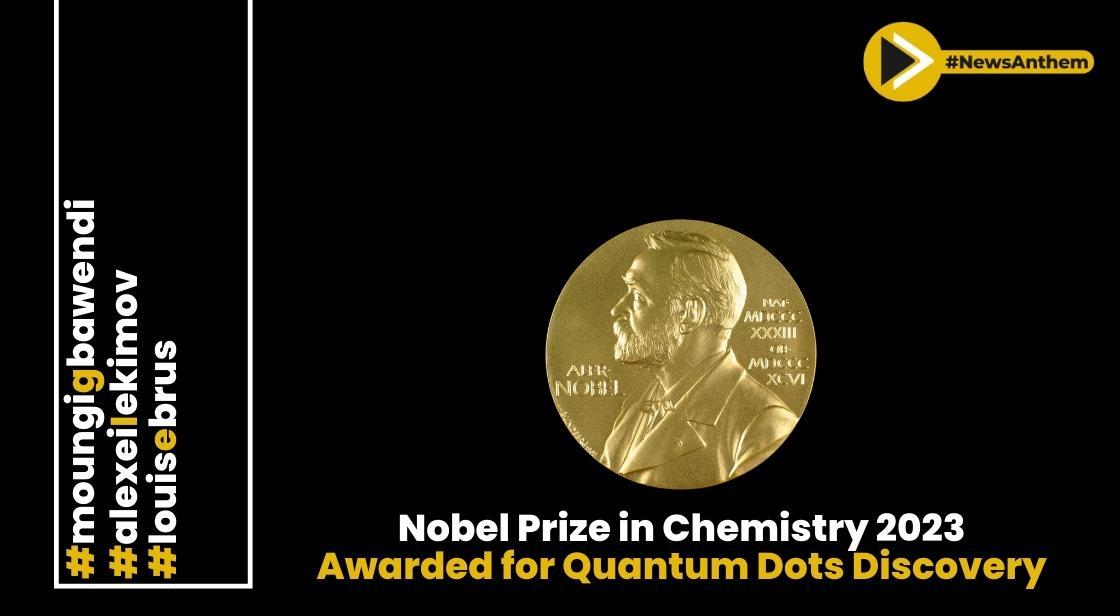Nobel Prize in Chemistry 2023 Awarded for Quantum Dots Discovery

Podcast
News Synopsis
In a groundbreaking acknowledgment of scientific achievement, the Nobel Prize in Chemistry 2023 has been awarded to Moungi G. Bawendi, Louis E. Brus, and Alexei I. Ekimov "for the discovery and synthesis of quantum dots." These nano-sized particles, known as quantum dots, have ushered in a new era in nanotechnology, showcasing properties determined by quantum phenomena due to their incredibly small size.
"The Nobel Prize in Chemistry 2023 rewards the discovery and development of quantum dots, nanoparticles so tiny that their size determines their properties."
Evolution of Nanotechnology: Quantum Dots Unveiled
The laureates have ventured into the realm of nanotechnology, producing particles of such minuscule dimensions that their behavior is governed by quantum phenomena.
Traditionally, an element's properties are dictated by the number of electrons it possesses. However, when matter is reduced to nano-dimensions, quantum effects come into play, profoundly impacting the material's characteristics.
Applications of Quantum Dots: Illuminating the World
Quantum dots have found their way into numerous applications that significantly benefit humanity. They illuminate computer monitors and television screens through Quantum Dot Light Emitting Diode (QLED) technology.
Furthermore, they enhance the quality of light emitted by LED lamps. Beyond visual technologies, biochemists and doctors employ quantum dots for intricate mapping of biological tissues.
"Quantum dots are now of great importance in nanotechnology, contributing to flexible electronics, tiny sensors, thinner solar cells, and encrypted quantum communication."
Understanding Quantum Dots: A Glimpse into the Future
Quantum dots, with their transformative properties, hold vast potential for the future. Researchers envision their contribution to flexible electronics, miniature sensors, thinner solar cells, and the realm of encrypted quantum communication. The journey of exploring the capabilities of these minute particles has only just begun.
Meet the Nobel Laureates: Bawendi, Brus, and Ekimov
-
Moungi G. Bawendi: Born in Paris, France, in 1961, Bawendi earned his PhD in 1988 from the University of Chicago. He is currently a Professor at the Massachusetts Institute of Technology (MIT) in Cambridge, MA, USA.
-
Louis E. Brus: Born in Cleveland, OH, USA, in 1943, Brus completed his PhD in 1969 at Columbia University. He is a Professor at Columbia University in New York, NY, USA.
-
Alexei I. Ekimov: Born in the former USSR in 1945, Ekimov obtained his PhD in 1974 from Ioffe Physical-Technical Institute in Saint Petersburg, Russia. He previously served as the Chief Scientist at Nanocrystals Technology Inc. in New York, NY, USA.
Insights into the Nobel Prize in Chemistry
The Nobel Prize in Chemistry, awarded 114 times to 191 laureates between 1901 and 2022, represents a pinnacle in scientific recognition. Notably, Frederick Sanger and Barry Sharpless have received the prize twice. The medal's design, symbolizing Nature, was crafted by Swedish sculptor Erik Lindberg.
"To date, the youngest Nobel Prize laureate in chemistry is Frédéric Joliot, who was 35 years old when he was awarded the chemistry prize in 1935."
Celebrating Scientific Achievement: Youngest and Oldest Laureates
Frédéric Joliot remains the youngest Nobel Prize laureate in chemistry, receiving the honor at 35 in 1935. On the other end of the spectrum, John B. Goodenough holds the record as the oldest chemistry laureate, having received the prize at the age of 97 in 2019.
Unveiling the Impact: Quantum Dots in Our World
In essence, the Nobel Prize in Chemistry 2023 recognizes the transformative impact of quantum dots in our world. These particles, born from scientific curiosity and ingenuity, promise a future where their applications continue to reshape the landscape of technology, medicine, and beyond.
-
Quantum dots are now used in a wide range of applications, including:
-
Televisions and LED lamps
-
Biological imaging
-
Flexible electronics
-
Tiny sensors
-
Thin solar cells
-
Encrypted quantum communication
-





